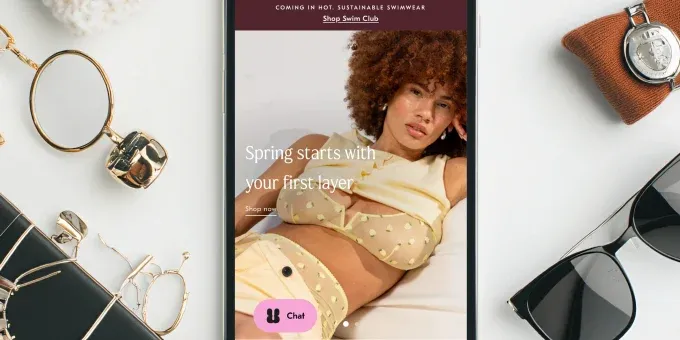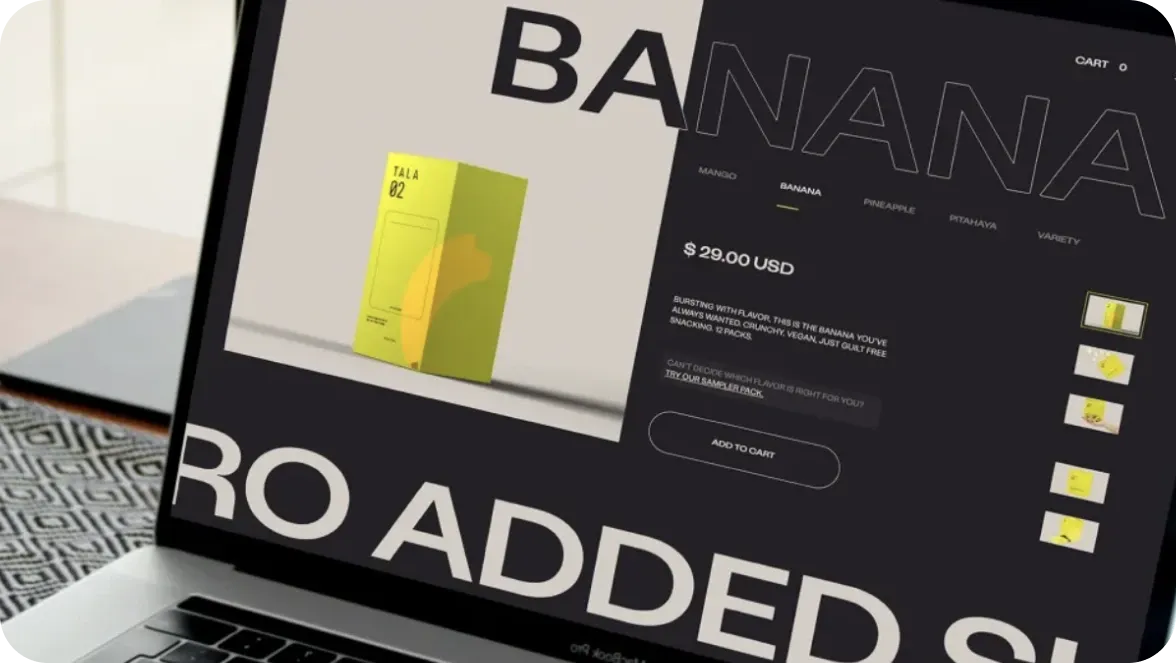
If you’re looking for an easy-to-implement solution to increase your store conversions, offering Buy Now Pay Later at checkout is a great option. What does Buy Now Pay Later mean? In this article, we not only explore this question but also describe the best practices and the reasons to use BNPL for your business.
TL;DR: BNPL: meaning, pros and cons, and best practices
What is BNPL? It’s a payment option that lets customers get the product now, pay over time in installments.
What is the reason to use Buy Now Pay Later for retailers? It boosts conversions, traffic, and AOV while reducing abandonment rates – but comes with higher commissions, more complex returns, fraud risks, and regulatory uncertainties.
The best BNPL practices. Make the BNPL offer visible across multiple pages, utilize it in promotional campaigns, set clear expectations, optimize the widget, run A/B tests, and stay compliant.
To choose the right BNPL provider compare top services in your region by fees, plans for customers, compliance with regulations, integration options, payout timing, and refund process.
What is Buy Now Pay Later?
Buy Now Pay Later (BNPL) is a payment option that allows customers to purchase a product without paying the full price upfront, but instead pay in installments over a preset period.
How does Buy Now Pay Later work?

Let’s see how BNPL works for customers. The process of purchasing a product using the Buy Now Pay Later option includes four steps.
- A customer selects a product, proceeds to checkout, and chooses BNPL as a payment method.
- The BNPL provider checks the customer's eligibility for giving credit and authorizes the purchase if the customer qualifies.
- A customer makes a partial payment, typically around 25% of the product price. The remaining purchase amount is divided into equal installments to be paid over weeks or months, depending on the provider’s terms.
- The BNPL provider collects the installments from the customer while delivering the total order amount to the merchant right after the purchase.
If a customer pays installments without delays, typically, there is no additional fee for using this option. How does BNPL work for merchants? They have to pay a percentage of the total transaction value and a fixed fee for the transaction itself. The commission rate depends on the BNPL provider’s terms.
Pros and cons of using BNPL for merchants
In recent years, the popularity of Buy Now Pay Later in ecommerce has been growing especially among the younger Gen Z and millennials audience. Customers look for alternatives to credit card debt and choose BNPL as a more convenient option. Merchants, in turn, follow the trend to attract more customers. As a result, the BNPL market size is expected to grow by nearly 70% between 2025 and 2030.
To understand if BNPL is the right option for your store, see the pros and cons of this feature.
The benefits of Buy Now Pay Later for merchants are as follows.
Higher conversion rates. Adding multiple payment options itself typically boosts store conversions, and BNPL is especially effective for increasing mobile purchases.
Enhanced average order value (AOV). If correctly implemented (we’ll explore the best practices further), BNPL allows an increase in AOV when you offer product bundles or supplementary items.
Reduced cart abandonment. BNPL helps customers more easily make purchase decisions at checkout, especially if you sell high-priced items, since they don’t need to pay the full price upfront.
Attracting new customers. You have the opportunity to attract customers who prefer BNPL flexibility and have a BNPL app installed on their smartphone. Plus, providers often promote their partners through emails, special directories, and marketing campaigns.
Along with the benefits of Buy Now Pay Later, you should also consider some drawbacks and risks of BNPL when implementing this feature on your website.
Higher transaction fees. BNPL providers charge higher fees than traditional payment processors – on average, 3-6% per transaction, compared to 2-3% for credit cards.
Customer returns. Returns may be more complex with multiple payment parties, plus, BNPL providers still charge transaction fees even if a customer returns a product.
Fraud risk. There is a risk of stealing credentials and using false identities for unauthorized purchases, which may lead to reputational damage and financial losses.
Regulatory uncertainty. Recently, the UK government established new regulatory rules for BNPL providers to ensure people can repay what they borrow. These and other new rules may impact advertising and affordability checks, potentially reducing the number of deals.
If the BNPL advantages outweigh its drawbacks for you, you’re likely to consider how to utilize this feature within your store for the best outcome.
Best Buy Now Pay Later Practices for merchants
Next, we’ve compiled the most essential recommendations on using Buy Now Pay Later for business to help you get the most out of this feature.
#1 Make the BNPL offer visible
To inform your customers that BNPL is available within your store, add badges or text about the BNPL offer. This information should be visible not only at checkout but also on product pages and in the cart.
See how Adidas displays the Klarna BNPL offer with the Learn more button on the product pages.
The company also added information about other providers at the bottom of the cart page.
#2 Set clear expectations
Ensure that you clearly explain the terms and conditions of the BNPL offer, including late fees and the process for returns or cancellations. This will not only encourage responsible use on the customer side but also reduce customer support load and minimize the post-purchase friction. At the same time, avoid over-promotion to eliminate any pressure. Instead, consider adding responsible shopping tips to encourage customers to think twice before using loans.
That’s how Adidas explains the terms of different BNPL providers on their website.
#3 Stay informed on regulations
Make your offer compliant with current regulations and keep an eye on legal changes since rules issued by the US CFPB, UK FCA, and EU regarding BNPL are becoming stricter. Check if your provider is transparent about complying with the regulations to ensure you won’t end up in any trouble.
#4 Use BNPL as a promotional tool
You can use the BNPL offer to promote some products or bundles through email marketing and ad campaigns, especially those that involve personalization. It could be a part of a special offer or just a payment flexibility message that nudges a customer to consider purchasing an item they previously looked for.
As an example of such a promotion, take a look at Intel’s old ads promoting their PC through the Buy Now Pay Later offer on social media.
#5 Monitor key metrics
To analyze the BNPL impact on your sales, track metrics associated with this feature – conversion rates, AOV, return rate, and profit margins (after BNPL fees). This analysis will let you evaluate ecommerce ROI and optimize this channel for better use. For example, you can change the place of your BNPL message, improve the message itself, or add more providers.
#6 Implement A/B testing
Based on performance metrics, run tests for the right optimization. Compare what works better for your audience – plain BNPL text vs CTAs, the placement below vs above the product description, etc. Make the same with the messaging. Which is a more catchy phrase – ‘Split your purchase into 4 easy payments’ or ‘Buy now, pay later with 0% interest’? You can also target your messages for specific audiences, such as customers who view high-ticket products.
Tips for choosing the right BNPL provider
The number of BNPL providers is growing, and the question is how to choose the right one for your business. To simplify your decision-making process, we compiled a list of the most important tips to follow.
Choose from the providers in your region
The more popular a service is in your country, the more new users it can bring to your store. On top of that, popular services have proven their reliability and are typically better aligned with current government regulations. For example, Afterpay and Zip are best known BNPL services in Australia, while the most popular providers in the US are PayPal, Afterpay, Klarna, and Affirm.
Explore BNPL provider fees
Compare the fees of different providers available in your region and find out if they charge monthly costs, flat fees for each transaction, or commission rates. You can also check if their fees depend on order volume or industry.
Check the integration process
Ensure that a BNPL service is easily integrated into your ecommerce platform. Is there native integration with Shopify, WooCommerce, or Bigcommerce? Is there API access for custom integrations? To seamlessly incorporate BNPL with your checkout flow, we recommend getting help from ecommerce developers familiar with your platform.
Explore payout timing
Before opting for some BNPL service, ask when you can expect to receive funds from each transaction. Mostly, providers pay merchants upfront, but not all of them. Therefore, it is better to know this in advance to avoid being surprised afterwards.
Compare plans for customers
Make sure that your customers will have a perfect user experience with the integrated BNPL feature since they will associate this service with your business. Compare interest-free and interest-based plans from different providers, check the ease of the approval process, and explore late fees and penalties.
Ensure that the refund process is smooth
BNPL refunds could be more complex compared to credit card returns. Bearing this in mind, you should thoroughly review how a provider handles the refund process for customers and the amount of money you will receive after returning the product.
Check compliance and risk protection measures
Find out how proactive your BNPL provider is regarding new regulations and if they’re licensed in your country. Also, ask how they handle the risk of non-payment and fraudulent transactions to ensure you’re protected from money losses.
To sum up
That’s the moment when we can summarize all the statements of this article to get a clear picture of Buy Now Pay Later for merchants.
-
BNPL allows customers to pay for your products in installments within a certain timeframe.
-
A customer chooses to pay by installments at checkout, and once they are verified by the BNPL provider, they pay the first installment. The provider then collects the remaining sum within the set period.
-
BNPL allows for higher conversions, attracts more customers, increases AOV, and reduces cart abandonment rate. At the same time, it has some drawbacks, such as higher transactional fees, a more complex refund process, fraud risk, and regulatory uncertainty.
-
Among the best BNPL practices are making the offer visible on your website, setting clear expectations for customers, staying informed about regulatory changes, using BNPL as a promotional tool across marketing campaigns, monitoring ROI, and running A/B tests for feature optimization.
-
To choose the right BNPL provider, you need to check options available in your region, compare fees for merchants and plans for customers, explore integration options, payout terms, refund process, and protection measures.
If you’re ready to implement a BNPL solution into your store but lack a professional development team, don’t hesitate to contact the DigitalSuits specialists. We have in-depth experience working with multiple ecommerce platforms and provide reliable ecommerce web development services for a broad range of industries.
Frequently asked questions
What is the most popular Buy Now Pay Later solution?
The popularity of BNPL services varies from country to country. While PayPal Credit is the leader in the US market, Klarna is the top service in Europe. Local WeChat and Tmall services dominate in China, and LazyPay is the leading service in India. So, your choice of the BNPL service should be based on the market you’re going to target.
Why are people using Buy Now Pay Later?
Unlike credit card providers, BNPL services offer interest-free loans, which attract people, especially members of Gen Z. It’s a convenient way to make a purchase even without having the necessary amount of money with you. That’s why the BNPL market is rapidly growing, though not without some ethical concerns regarding responsible shopping.
How do Buy Now Pay Later services make money?
At the basic level, the BPNL business model works much like a credit service. The difference is that BNPL providers fill the gap between customers, merchants, and, sometimes, financial institutions. They lend money to customers (in some cases with the support of a financial institution) and offer merchants their services to get more sales. On the one hand, they charge late fees and have some interest in long-term payment plans when working with customers. On the other hand, they charge transaction fees from merchants, thereby generating their profit.







































Was this helpful?
0
No comments yet